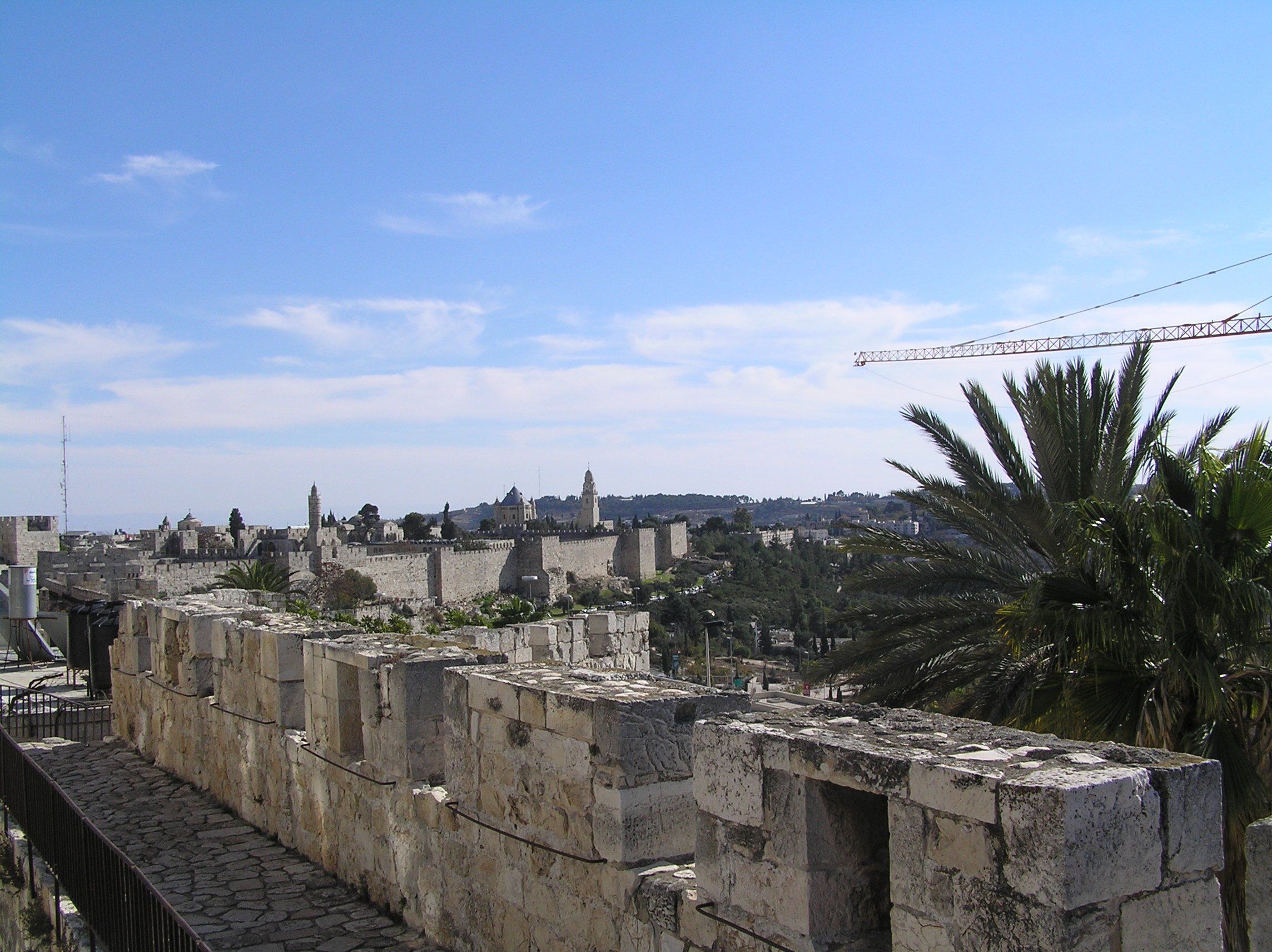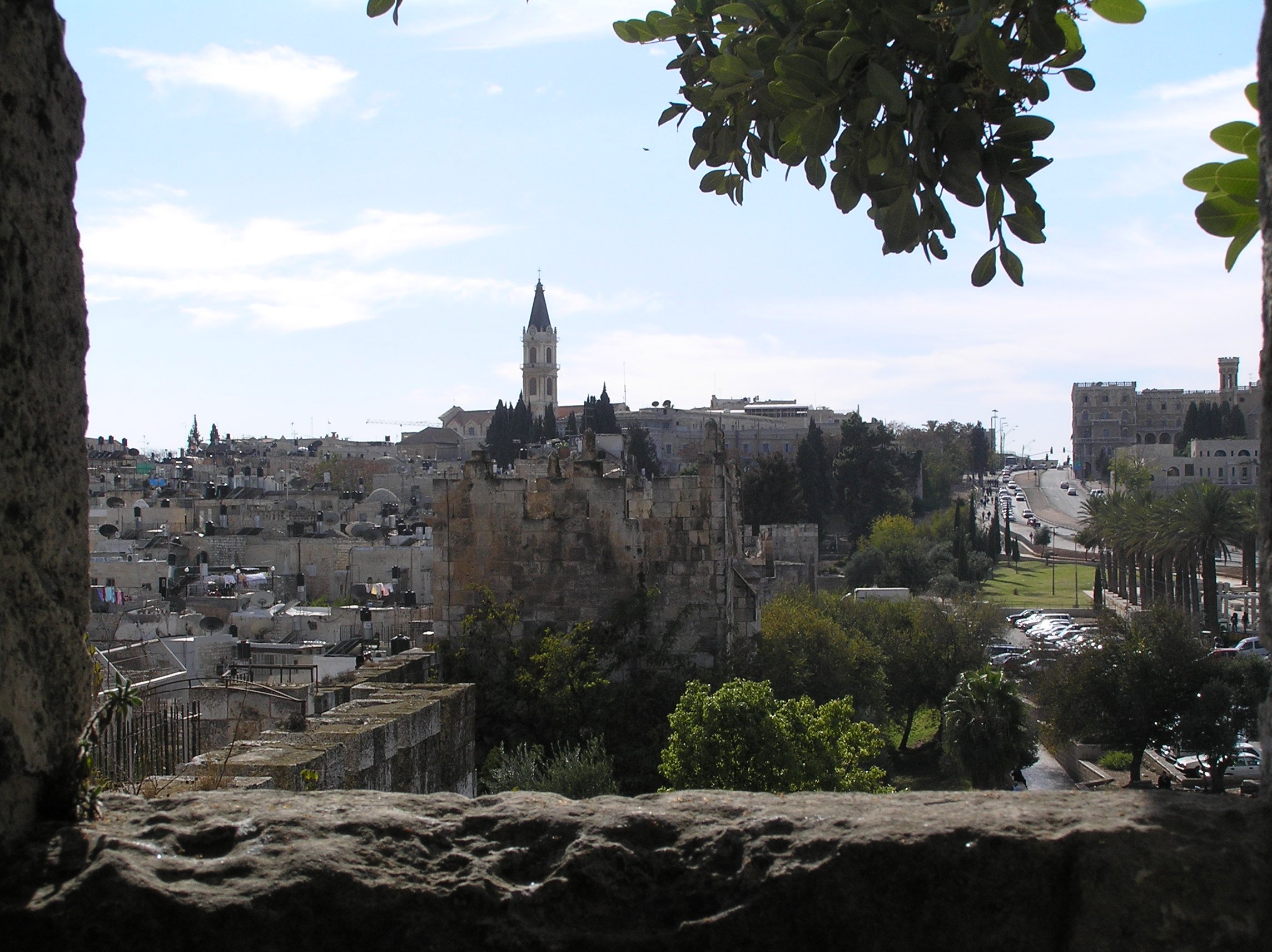November 15, 2005: Old City Stories
Looking over Jerusalem’s Old City walls toward the Southwest.
I went to have dinner with Christian friends living in Jerusalem's Christian quarter. Their home is made in the classic Arab style, its exterior walls three feet thick. They are separated from the Old City's 16th century walls by a narrow alleyway. It may be a cliché, but if these walls could talk...
Two years ago, right before leaving Palestine, I had visited with them. The Matriarch of the family, now passed away, shared her memory of those days of living on the edge of history. I missed her last night, but I recalled her chilling stories of 1948.
We were living in West Jerusalem. One day, someone knocked at the door of our home. They said, "We're the Haganah [Jewish paramilitary organization, predecessor of the Israeli Army]."
We didn't know who they were. "Come on in," we said.
"You have 48 hours to leave, or else."
"Or else what?"
"Or else we'll kill you."
The family left, their two-week-old baby girl in tow, seeking refuge in Bethlehem. One night, they ducked down in the cab of a truck as bullets flew around them. As the front line receded temporarily, they went back to their house. A Jewish family had already taken possession. They left everything they owned in their home. As the front line progressed, they went to Jordan to live in a tent. After the Armistice, they returned to the Old City to stay.
Looking at Damascus Gate from the East.
The Matriarch's story was that of a Palestinian refugee. It is one among many in this conflict. But in the world of politics, the issue of Palestinian refugees is too easily cast aside. The story of dispossession is deeply embedded in the Palestinian psyché. It is an integral part of Palestinian identity. For many Palestinians, what happened in 1948 is part of a long narrative of loss that continues until today. It is a deep wound, as substantial as the walls of this beautiful, troubled Old City.


